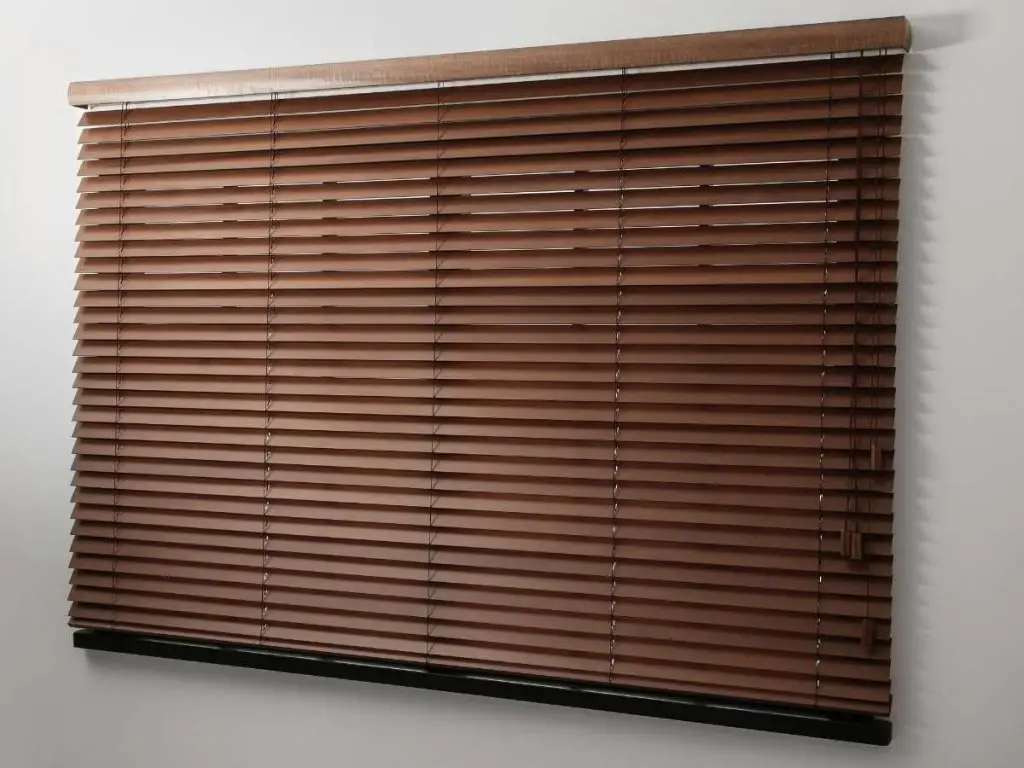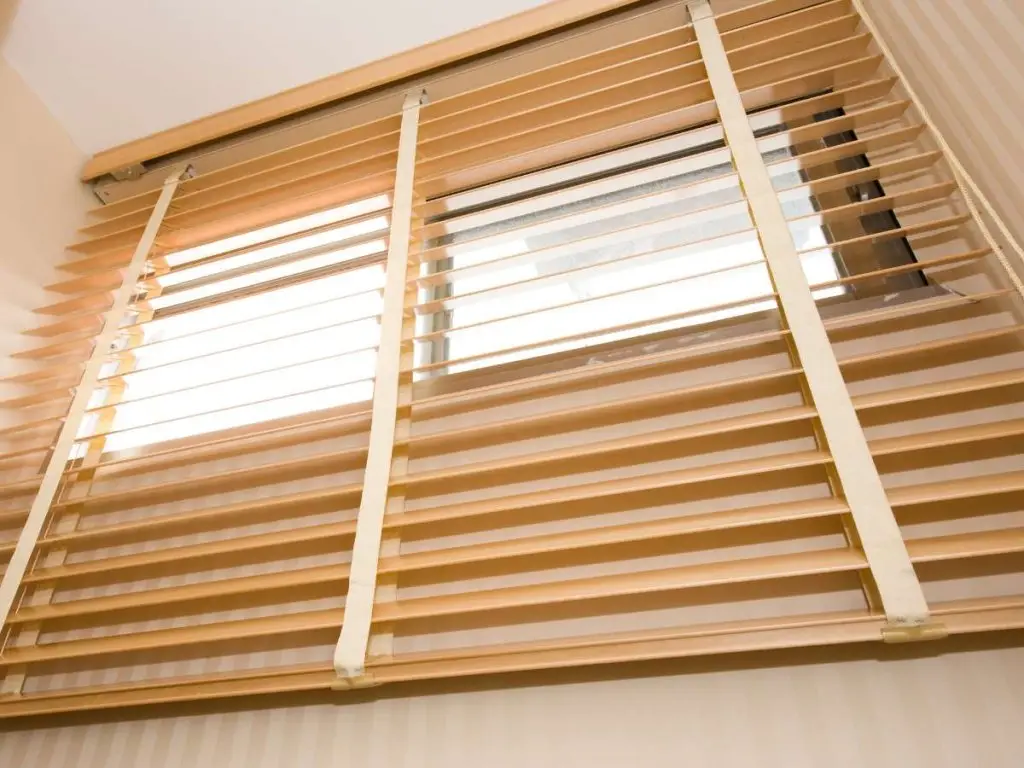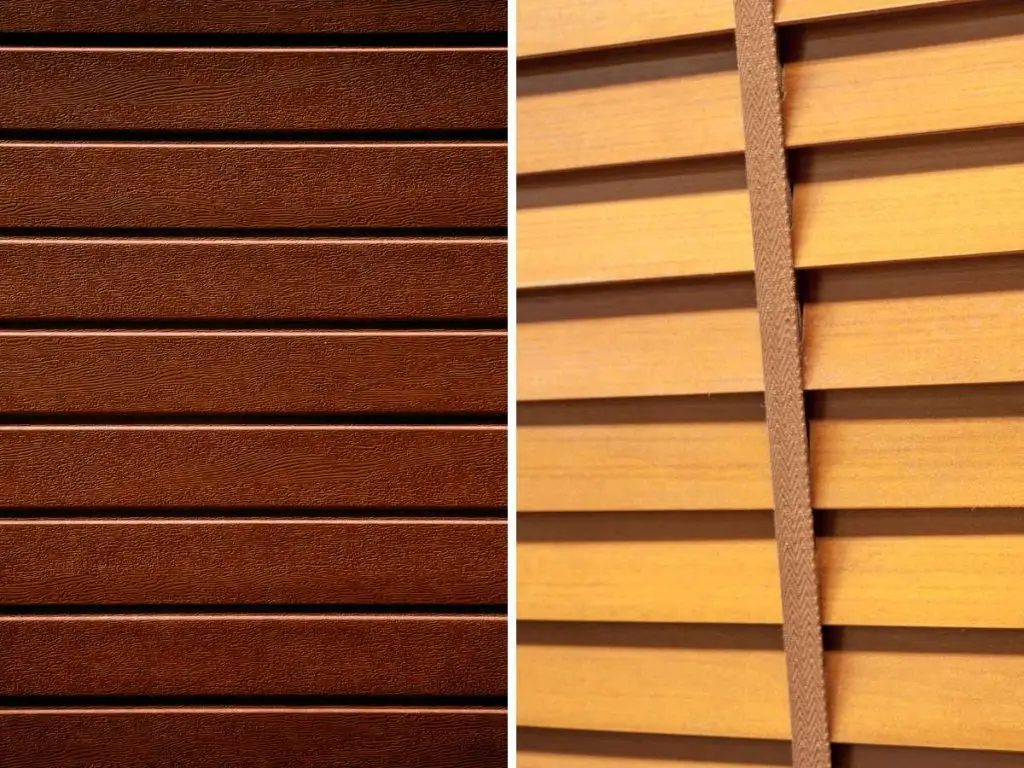Ever found yourself standing in the home decor aisle, puzzled by the choice between real wood vs. faux wood blinds? You’re not alone.
The warmth of real wood. The practicality of faux wood. It’s a classic tug-of-war scenario for homeowners and decorators alike.
We’ll delve into this common dilemma – shedding light on both options’ pros and cons, from cost to durability, aesthetics to maintenance. Like deciphering an intriguing mystery novel or solving a tricky jigsaw puzzle – it’s time we demystify this debate.
Your windows deserve the best dress-up! Stick around as we help you make that smart, informed decision with our deep-dive comparison. Are you ready?
Advantages of Real Wood Blinds

The allure of real wood blinds is hard to deny. Their natural beauty gives your home a warm, classic look that’s tough for other materials to mimic. But the advantages don’t stop at aesthetics.
Durability is another significant plus point for real wood blinds. These window treatments are built to last and resist damage well over time. With good care, these window treatments can remain in prime condition for an extended period of time, giving a great return on your money.
Maintenance needs vary depending on environmental conditions and usage, but cleaning them usually involves simple dusting or vacuuming. They may need occasional polishing with a suitable wood cleaner.
Let’s talk about insulation next. Did you know that wooden blinds provide better insulation than most alternatives? This means more efficient temperature control inside your home – keeping it cooler in summer and warmer during winter months.
Disadvantages of Real Wood Blinds
The first consideration? Cost. Genuine wood comes with a heftier price tag than its faux counterpart. So, if budget is your top concern, this might make you think twice.
A second drawback involves durability in certain conditions. Real wood can be sensitive to humidity and temperature changes, which can lead to warping or cracking over time – an issue less likely with faux alternatives.
Last but not least: maintenance needs. Although stunningly beautiful when well cared for, wooden blinds demand regular cleaning and dusting due to their texture – tasks that are less burdensome with smoother synthetic materials.
These considerations don’t mean real wood isn’t worth it. They’re simply factors you need to consider before making an informed decision on the best window treatment for your home.
Advantages of Faux Wood Blinds

Faux wood blinds bring several key advantages to the table.
One major benefit is their affordability. Faux wood blinds provide a budget-friendly alternative for those who desire the appearance of genuine wood.
Their resilience in various conditions sets them apart, too. Unlike real wood, faux wood resists moisture damage well, making it an excellent choice for areas like kitchens and bathrooms where humidity levels can be high. It’s also worth noting that these blinds are less likely to warp or crack over time because they’re made from durable materials such as PVC or composite.
Hunter Douglas, one reputable manufacturer, gives you peace of mind by offering long-lasting durability with its range of faux wood products.
Another advantage is easy maintenance. Cleaning faux wooden blinds typically involves nothing more than wiping them down with a damp cloth – no need for special treatments or polishes that might be necessary with natural woods.
In short, if you’re seeking window treatment solutions that combine aesthetics, affordability, and durability, then faux wooden blinds could be your best bet.
Disadvantages of Faux Wood Blinds
Faux wood blinds, while affordable and resistant to moisture damage, do have some drawbacks.
One key issue is their lack of natural beauty. Unlike real wood blinds that carry a rich warmth and timeless elegance, faux wood lacks this charm.
Their tendency to fade over time is another concern. The sun’s harsh rays can cause them to lose their vibrant color faster than real wood. So you may find yourself replacing them more often than expected.
Aesthetics aside, the weight of faux wood blinds can be an issue, too – they’re heavier than their wooden counterparts, which could lead to difficulty in raising or lowering them, especially for larger windows.
To top it off, despite being designed as a durable alternative, faux woods aren’t completely invincible either. They are susceptible to warping or cracking under extreme temperatures like real ones.
Comparing Real Wood vs Faux Wood Blinds

When you’re deciding between real wood and faux wood blinds, several factors come into play. Let’s examine the key differences between real wood and faux wood blinds.
The Cost Factor
Faux wood blinds are generally more affordable than their real wood counterparts. But if you’re willing to invest a bit more for the authentic look and feel, real wood blinds might be worth considering.
Durability Matters
Real wood can warp or crack in high humidity conditions while faux woods offer higher resistance. However, with proper care, both options could last a lifetime.
Aesthetics: Natural vs Manufactured Beauty
If we talk about beauty alone, there’s no beating the natural grain texture of faux woods’ cousin – genuine hardwoods. Yet many homeowners find that faux woods meet their aesthetic needs just fine.
Maintenance Requirements
Cleaning ease is where faux outshine real wooden ones because they don’t need special treatments against moisture damage; dust them off occasionally, and they’re good as new.
FAQs
The best choice depends on your needs. Real wood is great for aesthetics and durability, but faux wood offers affordability and resistance to moisture.
Faux wood lacks the natural beauty of real woods. Over time, they can fade and may not offer as much insulation.
Faux Wood’s perks include being cost-effective, durable against humidity, and easy maintenance. However, it does fall short in replicating real woods’ feel.
Real wooden blinds can be pricey and prone to warping or cracking if exposed to high humidity levels over time.
Conclusion
Real wood or faux wood blinds, that’s the question. Now you’ve got some answers.
Remember real wood blinds? Natural beauty and durability are their hallmarks. But they’re not cheap, and humidity can warp them over time.
Faux wood blinds – affordable with a resistance to moisture damage. Yet they may lack the authentic charm of natural wood and might fade over time.
In short, when choosing between real wood vs faux wood blinds, it boils down to what matters most: aesthetics or practicality?
Don’t hesitate! Schedule an appointment with Top Notch Shutters now, and our expert team will provide personalized advice, precise measurements, and professional installation, ensuring your windows are dressed in the finest blinds available. Enhance your home’s beauty and comfort—act today!

